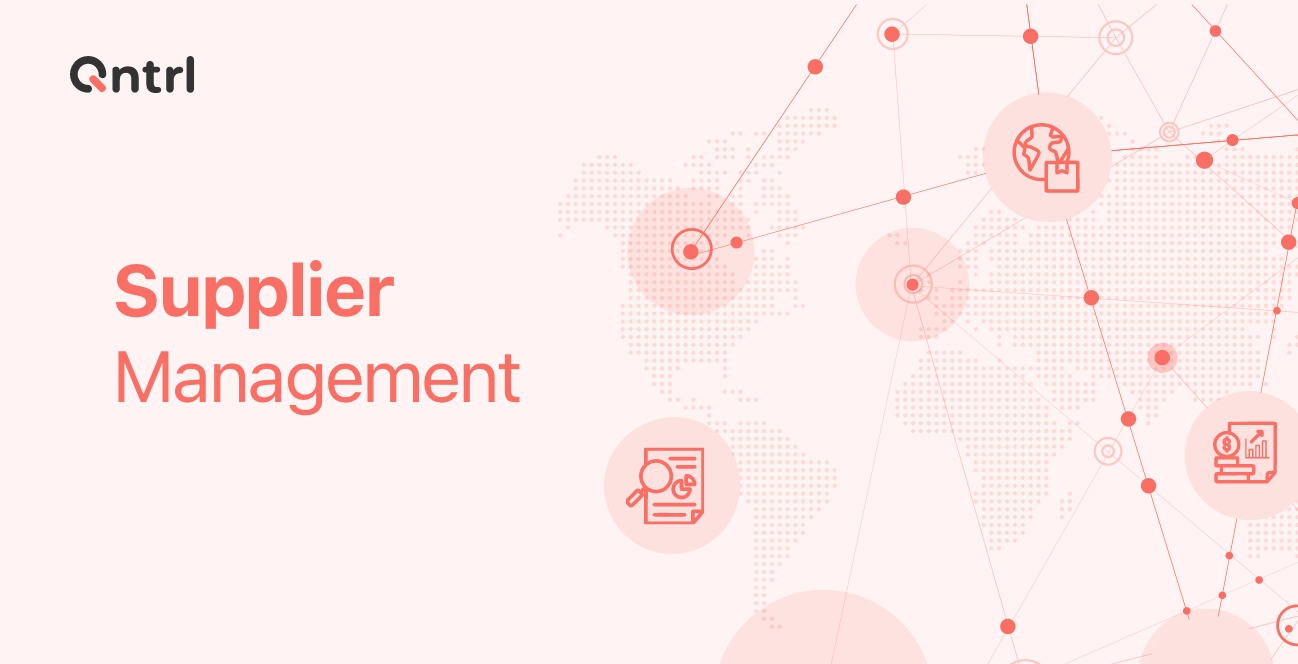A bad procurement decision means higher costs for you—and usually a higher price for your product/service. Thankfully, adopting some simple best practices, big and small, can help your organization achieve the procurement optimizations it needs to succeed. Here are our 6 best practices for an enhanced, efficient procurement strategy.
Adopt a systematic approach
Operational efficiency translates to profit, which is why it's important to do everything you can to maximize it. Often, a lack of clearly defined processes results in organizational inefficiency.
It's difficult for teams to know which task to prioritize at any given time without clearly defined processes. Additionally, employees often find it challenging to coordinate project delivery when dealing with multiple stakeholders. Most detrimentally, ill-defined processes can result in disorganized and error-prone operations.
While tasks can still be completed using inefficient techniques, the cost in money, efficiency, productivity, and morale are likely to be high. Duplicate requests generate extra expenditures when there are unclear procurement procedures in place—and bad record keeping causes delays and other delivery interruptions.
Having a low-code workflow orchestration platform like Qntrl can enhance visibility in your procurement process and help you adopt a system that can organize your procurement workflow.
Pick a tool—preferably cloud-based
Traditionally, procurement functioned via paperwork and some very intelligent people.
It served its purpose, but it was inefficient and incredibly time-consuming.
As the internet and e-commerce became more popular, sourcing capabilities were pushed to email and websites. And when technological advances proliferated around the world, companies turned to procurement technology and purchasing tools to automate processes and increase profitability.
This technology helps improve overall supply chain reliability, transaction transparency, and cost savings. There are numerous sourcing software options on the market, and the right sourcing tools make all the difference. Our suggestion is to choose software that can easily learn your procurement process and has the capability to integrate, collaborate, and analyze effortlessly.
Shift from manual to automated
Manually processing data—or anything for that matter—is no longer necessary, thanks to automation. Automation helps you increase cost savings and decrease mistakes and repetitive processes, including data input, record updates, approvals, and document hand-offs.
So why automation for procurement?
- Saves time: Consider the number of hours your team spends processing purchase orders, entering data, following up on approvals, paying invoices, and other tasks.
- Reduces errors: Automation will also lessen the possibility of errors, even basic ones like wrongly inputting amounts and order numbers.
- Lowers costs: One of the top benefits of digital procurement procedures is that it lowers labor expenses—and workflow automation contributes greatly to this.
Centralize your data
In order to maintain data in an organization's systems properly, shared data operated and processed in multiple systems—which is prone to error—has to be unified and managed efficiently; leaving only the most recent, accurate, and trustworthy information for users.
Some procurement organizations employ workflow orchestration tools to store data that supports request tracking, seamless integration with enterprise resource planning (ERP) applications, and a centralized repository to process data. This gives users consistent access to verified, up-to-date information.
Optimize all your procurement processes
- Manage spending
To ensure accountability and reduce the potential for fraud in the procurement process, spend transparency is essential—and getting control of your spending is an excellent approach to achieving cost savings. Just make sure you have stringent policies and maintain compliance by constantly analyzing spending.
Applications like Qntrl provide built-in rules that help companies establish policies and compliance across the organization.
- Enhance your supply relationship
Sourcing, analyzing, and managing vendors—and maintaining a great relationship with them—directly reflects how effortless and transparent your vendor management is. Keep examining your sourcing tactics to find new chances to strengthen and streamline the process, while achieving the best deal.
- Focus on inventory management
Organizations are continuously seeking methods to reduce spending and boost profits—especially as margins in some sectors keep declining. That's why it's crucial for procurement teams to regularly assess their inventory and make sure it's optimized.
Globally, procurement professionals are realizing the value of data-driven insights. To avoid delays, it's a good idea to switch from a manual technique to a more sophisticated data-driven inventory management system as soon as possible.
- Level up contract management
By transferring contract administration procedures to the cloud, businesses can avoid procurement hazards. Organizations can cut expenses and decrease risk when contracts are generated, kept, and managed in a single data repository.
Automation further enables organizations to store all their documents in the cloud, provide a highly scalable and customizable user interface that can be adjusted to meet specific business needs, set off automated alerts to highlight contract milestones, renewals, and potential renegotiation opportunities, and more. It helps businesses keep tabs on product quality, price changes, and adherence to contract terms and rules.
Motivate your team
All the above-mentioned tools and strategies will only be successful if your team is interested and trained enough to use these new technologies and strategies. With user-friendly applications, you can make it effortless to implement new software and policies—and ensure everyone is compliant with them. With tools like Qntrl, setting up business rules can be automated and easily implemented organization-wide.
It's crucial to prepare and motivate your team to adopt new strategies while retaining company values and culture. You need clear protocols that secure relationships between all key players if you want to ensure your procurement strategy is operating successfully. This requires streamlined processes and enhanced transparency—which is why it's so important to automate and digitize your procurement procedures with workflow orchestration software that can help you implement these 6 best practices.







